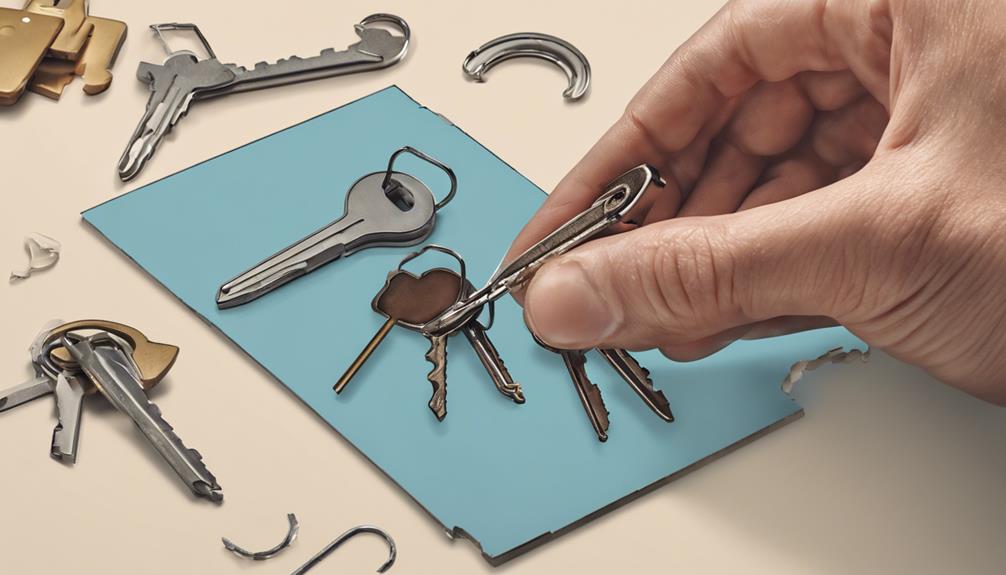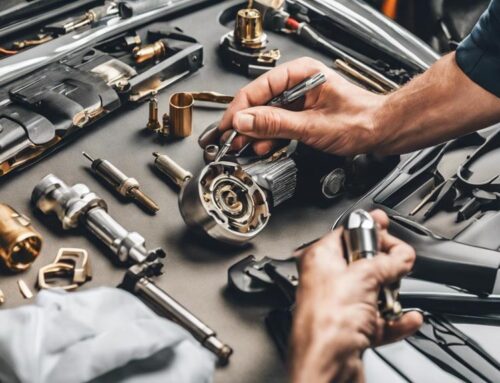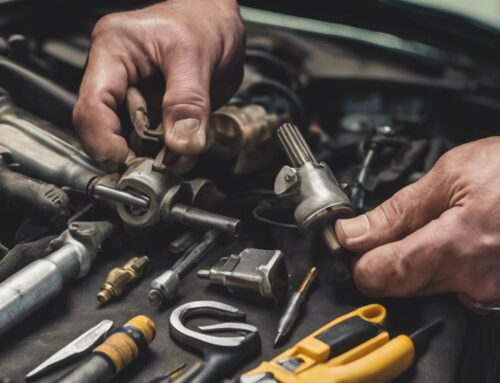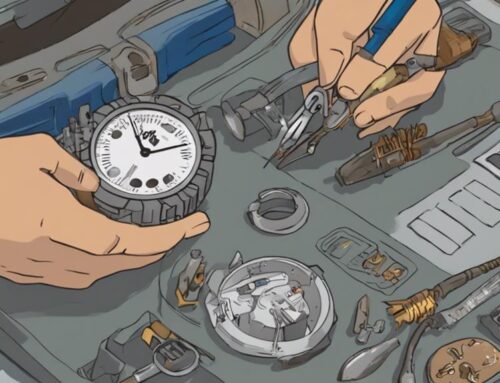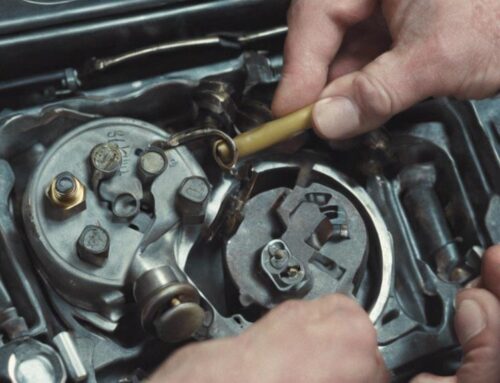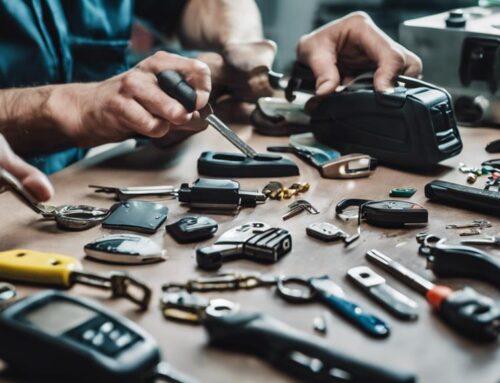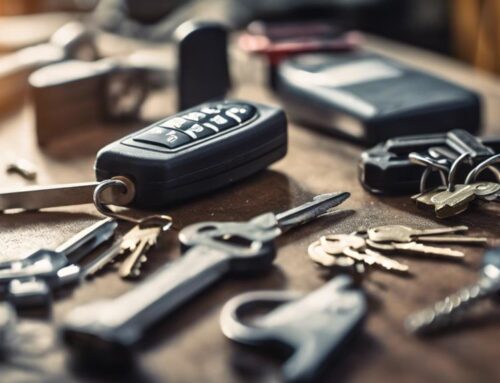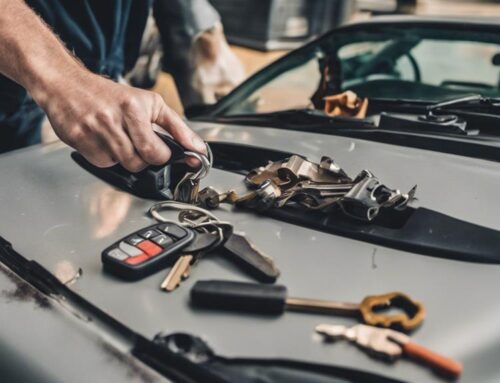If a key breaks in the lock, first wear gloves to protect yourself. Avoid using excessive force and never insert foreign objects. You may need needle-nose pliers, tweezers, a key extractor tool, and lubricant. Use needle-nose pliers for standard keys or a locksmith for complex ones. When attempting removal, apply lubricant, go slowly, and stay patient to avoid further issues. Consider calling a professional if DIY fails or your lock is high-security. Remember, immediate action is vital, and expert locksmith services offer affordable, reliable solutions. Remember, handling broken keys carefully is essential to prevent any further damage.
Key Takeaways
- Use needle-nose pliers or tweezers for extraction.
- Apply lubricant to ease the removal process.
- Proceed slowly to avoid further damage.
- Know when to seek professional help.
- Stay calm and patient during extraction.
Safety Precautions
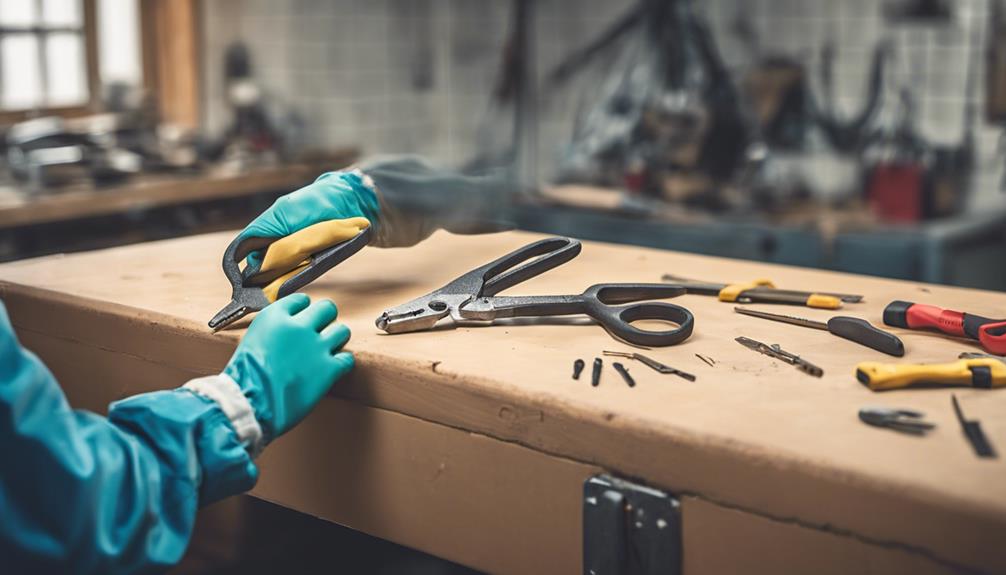
When dealing with a broken key in a lock, prioritizing safety precautions is crucial to prevent any accidents or further damage. Different key types and lock mechanisms may require varying approaches for removal. Before attempting anything, make sure to wear gloves to protect your hands from any sharp edges or potential splinters. Avoid using excessive force as it may worsen the situation, causing more damage to the lock. In case of an electronic lock, be cautious of any potential electrical hazards. Always have a flashlight handy to see clearly what you are doing. Remember, it's crucial to stay calm and collected to tackle the situation effectively while keeping safety at the top of your mind.
What Not to Do
If a key breaks in a lock, there are certain actions you should avoid to prevent further complications. When dealing with this sticky situation, it's crucial to steer clear of certain actions that could worsen the problem. Here's a humorous take on what not to do:
| What Not To Do | Why |
|---|---|
| Use excessive force | Risk breaking the lock mechanism further |
| Try to gain access with a different key | Different key types won't work |
| Insert foreign objects | Could damage the lock mechanism |
| Ignore the broken key | It may complicate the removal process |
Tools You May Need
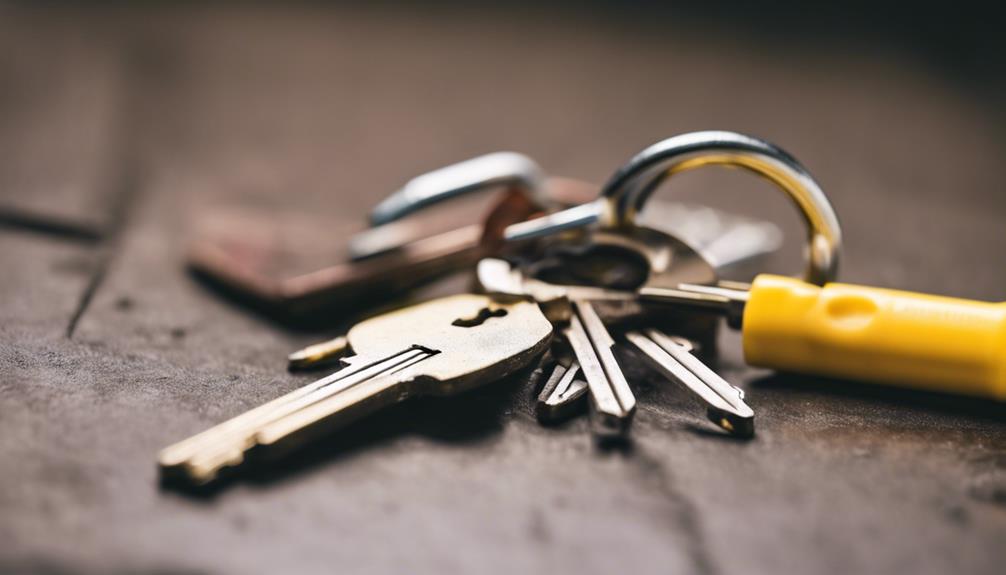
To tackle a broken key in a lock, it's vital to have the right tools on hand. Essential removal tools like key extractors and tweezers can help you successfully retrieve the broken key. DIY extraction techniques, combined with these tools, can assist you in resolving the issue effectively. If you're unsure about how to use these tools, locksmiths can provide professional assistance and guidance in broken key extraction techniques.
Essential Removal Tools
You will need a few essential tools on hand if you find yourself needing to remove a broken key from a lock. Here are the must-haves:
- Needle-Nose Pliers: Perfect for grasping and pulling out the broken key from the lock mechanism.
- Tweezers: Useful for extracting smaller key fragments or reaching into tight spaces within the lock.
- Key Extractor Tool: Specifically designed for removing broken keys, this tool provides a firm grip for easy extraction.
These tools will help you tackle different key types and lock mechanisms with ease. Remember, keep them in your DIY toolbox for that unexpected key mishap – you never know when you might need them! If you want to explore more about safe broken key extraction tools, check out this Essential Tools for Safe Broken Key Extraction article.
DIY Extraction Techniques
When dealing with a broken key stuck in a lock, employing the right DIY extraction techniques can save you time and hassle. To tackle this challenge, consider the type of key and lock mechanism you are dealing with. For standard house keys, a pair of needle-nose pliers can often do the trick. For more complex keys like car keys with electronic components, a professional locksmith may be your best bet. Other tools that might come in handy include tweezers, a small screwdriver, or even a broken key extractor kit. Remember to proceed with caution to avoid causing further damage to the lock. By choosing the appropriate method based on key types and lock mechanisms, you can increase your chances of successfully removing the broken key. If you encounter a jammed lock or a broken key, these essential tips can help you navigate the situation effectively.
DIY Removal Steps
To remove a broken key from a lock on your own, you'll need specific tools for extraction, such as needle-nose pliers or tweezers. Before attempting to remove the key, it's helpful to lubricate the lock to ease the process. Approach the task slowly and steadily to avoid pushing the broken key further into the lock mechanism.
Tools for Extraction
If faced with the unfortunate situation of a key breaking inside a lock, having the right tools for extraction is essential for a successful DIY removal process. Here are three tools that can help you tackle this sticky situation:
- Needle Nose Pliers: These are perfect for grabbing onto the broken key piece and gently pulling it out. Just like using tweezers to remove a splinter, but for keys! If you want to know more about the costs associated with broken key extraction services, check out Understanding Costs of Broken Key Extraction Services for detailed information.
- Key Extractor Tool: This specialized tool is designed specifically for removing broken keys from locks. It has a hook-like end that can latch onto the broken key for easy extraction.
- Jigsaw Blade or Coping Saw: In case the broken key is deeply lodged, these tools can help you create a notch to grab onto the key fragment and pull it out. Just don't go all "Bob the Builder" on your lock!
Lubricate for Ease
For easier extraction of a broken key from a lock, lubrication plays an essential role in facilitating the removal process smoothly. When dealing with a stuck key, having the right lubricant can make all the difference. There are various key lubricant options available, including graphite powder, silicone spray, or WD-40. To apply the lubricant, start by inserting the nozzle into the lock cylinder and giving it a short spray. Then, gently jiggle the key in the lock to help distribute the lubricant evenly. Allow the lubricant a few moments to work its magic before attempting to remove the broken key. Remember, a well-lubricated lock is a happy lock, and a happy lock is more likely to let go of that broken key with ease! Remember to check out the Essential Tips to Keep Your Locks Rust-Free and Functional for more lock maintenance advice.
Slow, Steady Approach
When faced with a broken key stuck in a lock, taking a slow and steady approach to its removal can increase your chances of success. Here are three key tips to help you tackle this challenge like a pro:
- Identify the Key Type: Different key types require varying removal techniques. For instance, traditional keys may need a different approach compared to modern smart keys. It's important to understand the different key types to choose the right removal method.
- Understand the Lock Mechanism: Knowing how the lock functions can guide your removal strategy. Whether it's a pin tumbler or wafer lock, understanding the mechanism can make the process smoother.
- Patience is Key: Rushing through the removal process can worsen the situation. Stay calm, take your time, and remember that a slow approach is often more effective than a hasty one.
When to Call a Professional
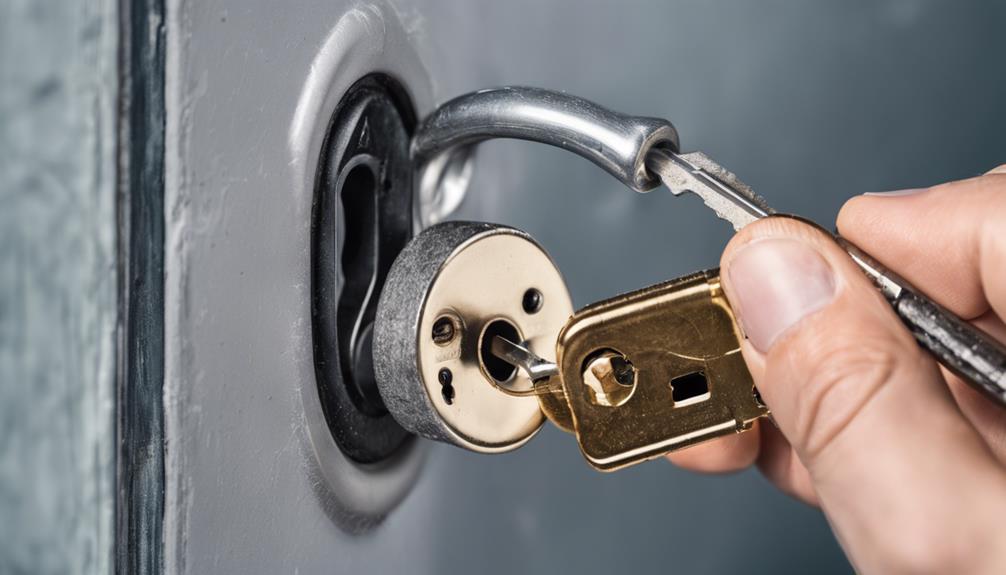
Facing a broken key in your lock can be a frustrating and inconvenient situation. While attempting DIY fixes can be tempting, there are times when it's best to call a professional locksmith. If you've exhausted key replacement options, or if you're dealing with a complex lock system, it's wise to seek expert help. Professional locksmiths have the experience and tools to handle a wide range of lock types, from traditional to high-security locks. Additionally, if you're unsure about causing further damage to your lock or door, it's a good indication to call in the pros. Remember, even though you can handle many situations yourself, sometimes it's best to leave it to the experts for a smooth and stress-free resolution. If you're interested in essential locksmith solutions for break-in recovery, you can check out this blog post for more information.
Benefits of Low Rate Locksmith
Considering the benefits of Low Rate Locksmith, you'll find a reliable and cost-effective solution for all your lock-related needs. Here are three reasons why Low Rate Locksmith is the way to go:
- Affordable Services: No need to break the bank when dealing with lock-related issues. Low Rate Locksmith offers budget-friendly solutions without compromising on quality. Their 24/7 House Lockouts Service guarantees you get assistance at any time, day or night.
- Emergency Response: Locked out of your house at an ungodly hour? Low Rate Locksmith has your back with their swift emergency response team ready to assist you whenever you need it most. Their commitment to 24/7 assistance guarantees you never have to wait long for help.
- Professional Expertise: Say goodbye to DIY disasters. Low Rate Locksmith's professionals are trained to handle all types of lock problems efficiently, saving you time and hassle. Trust in their experienced locksmiths for secure and reliable solutions.
With Low Rate Locksmith, you can trust that your locks are in good hands without emptying your pockets.
Conclusion
To sum up, remember to stay safe, stay calm, and follow the steps outlined to successfully remove a broken key from a lock. By taking the right approach and using the proper tools, you can tackle this challenge confidently and effectively. Don't hesitate to seek professional help if needed, but with a little patience and persistence, you can save time and money by handling the situation yourself. Embrace empowerment and tackle the task with precision and poise!

